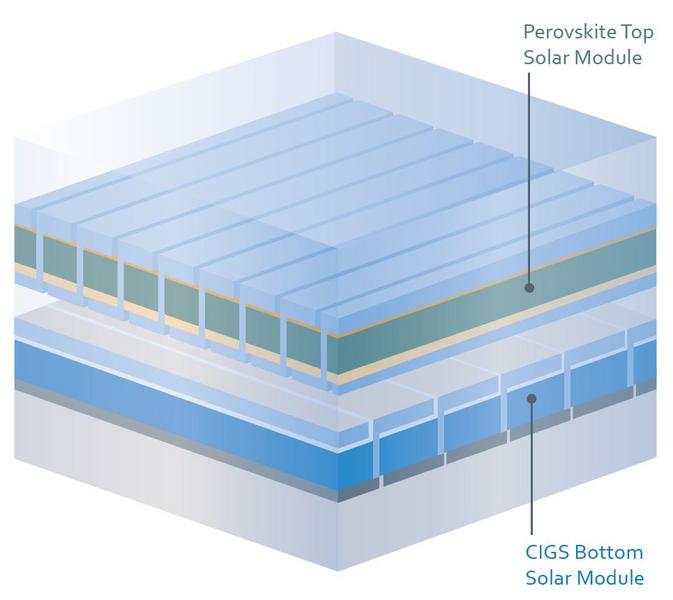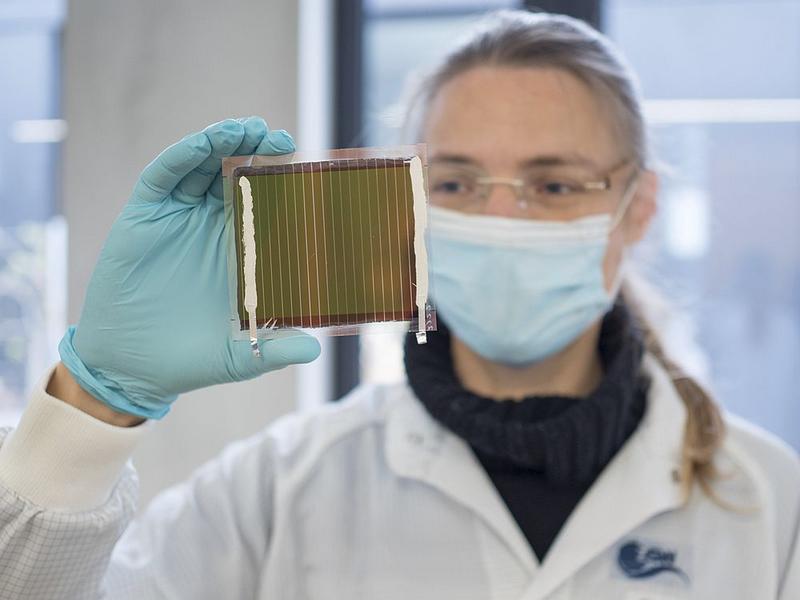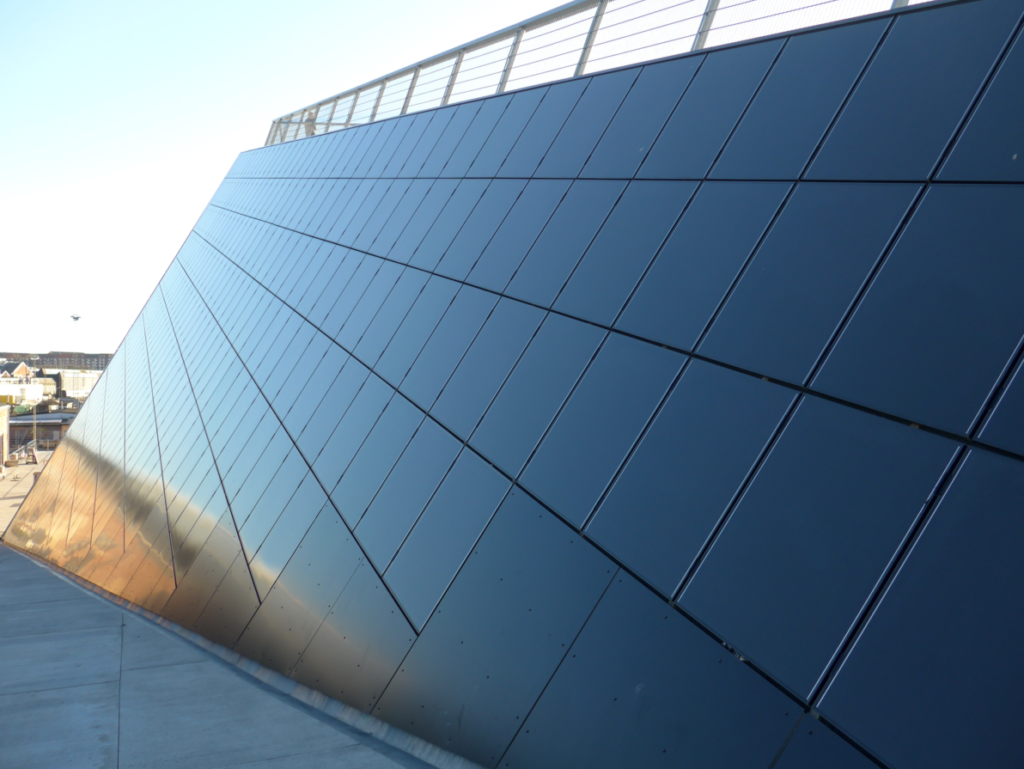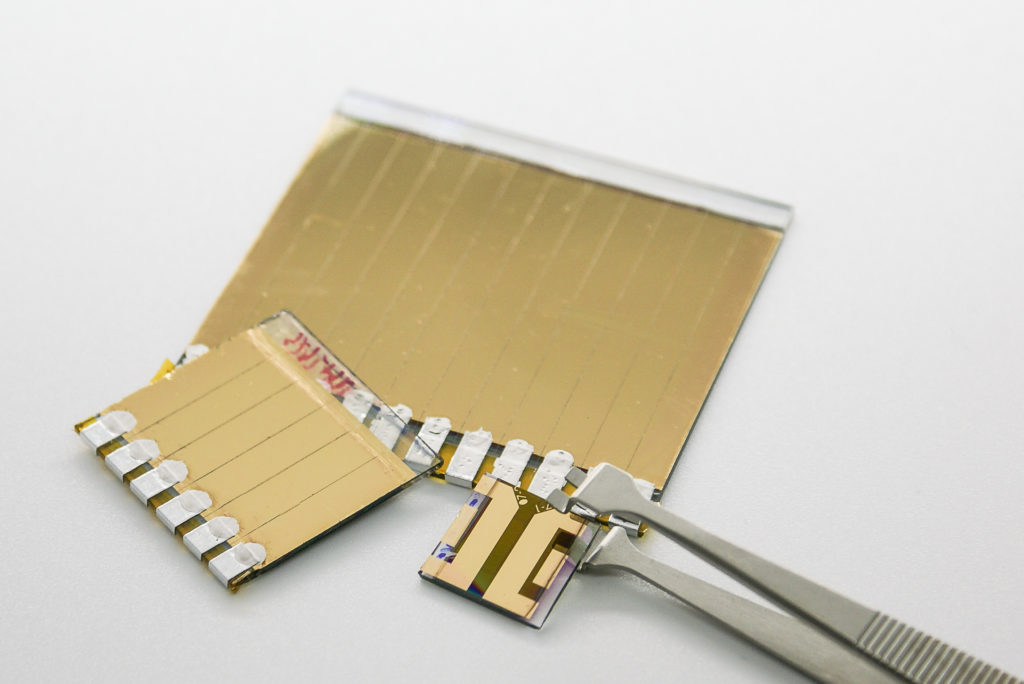ZSW combines perovskite with CIGS to build a tandem solar module with 21+ percent efficiency.
Highly efficient, affordable solar panels enable us to accelerate the rollout of photovoltaic (PV) systems and generate more solar power. A promising next-generation technology is the tandem module. Made of two sandwiched solar modules, it delivers more electrical energy than conventional panels. The Centre for Solar Energy and Hydrogen Research Baden-Württemberg (ZSW) has now achieved 21.1 percent efficiency with this technology. Not only are these thin-film-based modules highly efficient, they can also be light and flexible. Modules made of lightweight, pliable materials open doors to many use cases that remain closed to the standard rigid modules found in solar parks.
After decades of rigorous research, the efficiency of the prevailing silicon cells is fast approaching the practical limit of around 27 percent. As it stands, there is but one technology that promises further increases to well over 30 percent – the tandem solar module. It consists of solar cells made of different materials layered on top of one another. The different active layers work together to increase efficiency by jointly making better use of the width of the solar spectrum than each single solar cell does on its own.
One group of materials, metal-organic perovskites, holds great promise for tandem solar modules. “Some compounds in this class of materials exhibit excellent optical and electronic properties and are abundantly and inexpensively available on Earth,” says Dr. Jan-Philipp Becker, head of ZSW’s Photovoltaics: Materials Research department. “With their high optical energy bandgap, compounds in the top solar module are able to use the high-energy range of the solar spectrum very efficiently. At the same time, they allow a considerable share of the spectrum’s low-energy range to pass through to the bottom solar module.”
Excellent adaptation to the solar spectrum
Conventional silicon PV cells would appear to be the obvious choice for the bottom solar module. However, an even more interesting proposition is to use thin-film technologies exclusively. The bottom module can also be made of perovskite or of CIGS, which is the case in ZSW’s module. CIGS is a mix of materials – copper, indium and gallium vapor-deposited onto a rigid or flexible substrate in a selenium atmosphere. The institute’s experts and industry partners had developed this technology and ramped it up for mass production in earlier projects. CIGS’s spectral absorption can be tailored to a perfect fit for the tandem composite.
ZSW’s tandem solar module has an area of nine square centimeters and achieves 21.1 percent efficiency. This prototype also features scalable component architecture suitable for industrial manufacturing. The best performance attained to date with tandem solar modules made of perovskite and CIGS is just slightly higher at 22 percent. ZSW has already achieved an excellent efficiency level of 26.6 percent with this combination of materials in smaller laboratory cells.
Several steps to success
It took multiple stages of technical development to achieve these outstanding values. First, the researchers optimized the submodules. The top perovskite half-module not only has to be highly efficient; it must also be semitransparent to allow enough light to pass through to the bottom module. They made several improvements to this end, including developing more transparent electrodes and enhancing the passivation of boundary layers.
The tandem structure as a whole in all prepared cells and modules outperformed individual cells or modules in terms of efficiency. This clearly demonstrates the superiority of tandem solar modules. ZSW now aims to further scale up and develop tandem thin-film technology in a joint effort with interested industry clients.
Tandem solar modules – efficient, light and flexible
Tandem solar cells that pair perovskite with CIGS offer benefits beyond high efficiency. This thin-film technology can also be deposited on plastic or steel films to make light, flexible modules that lend themselves to many more use cases. They can be installed the conventional way in solar parks and be seamlessly integrated into vehicles and on factory roofs that cannot handle heavy loads.
Recent studies point to even more benefits: For one, it costs less to generate power with thin-film PV modules. For the other, PV production consumes less material and energy to leave a better environmental footprint.
ZSW partnered with the Karlsruhe Institute of Technology (KIT) in this research initiative, which was part of the recently completed CAPITANO project funded by the German Federal Ministry of Economic Affairs and Climate Action (BMWK).












